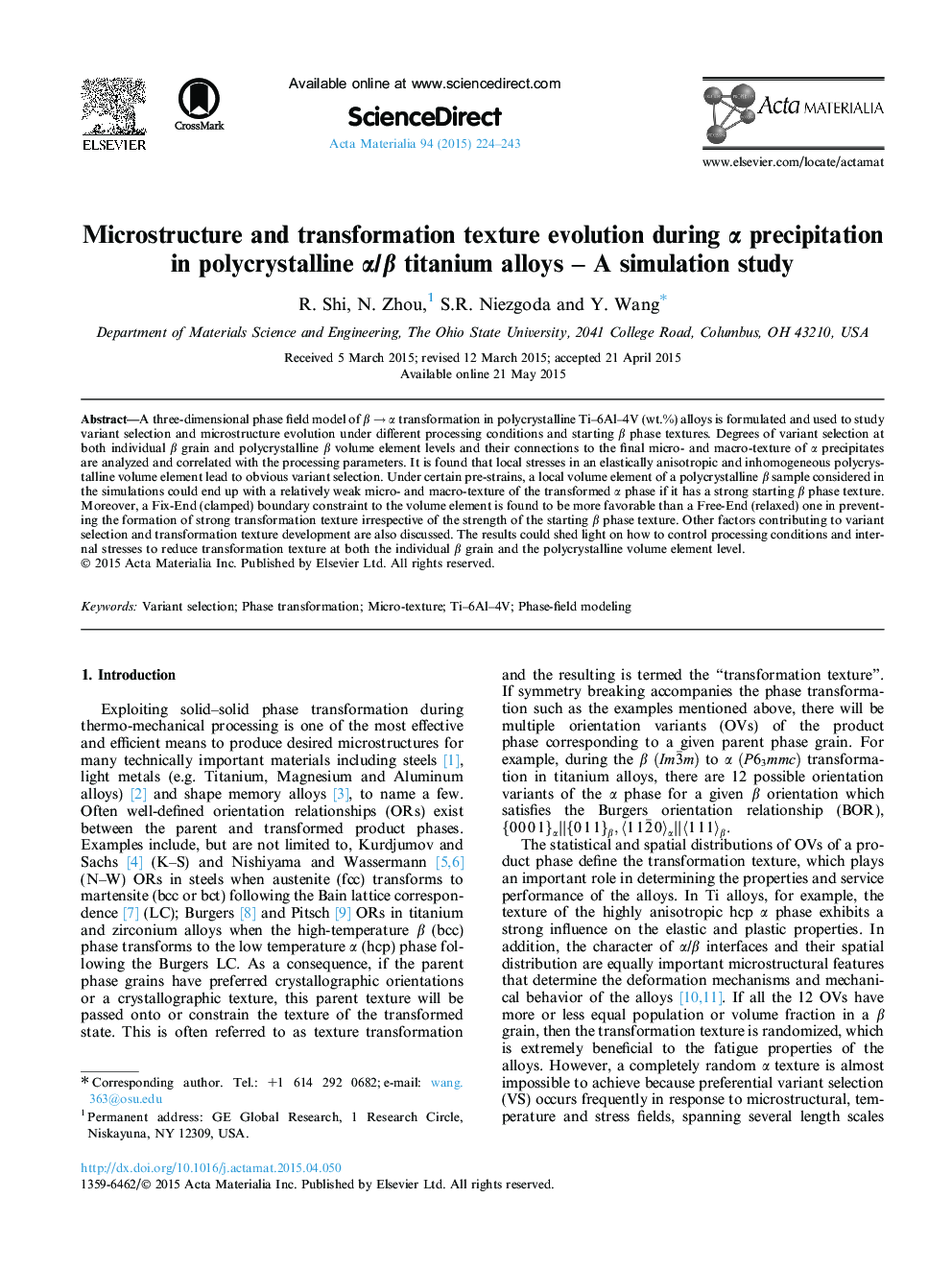| Article ID | Journal | Published Year | Pages | File Type |
|---|---|---|---|---|
| 7880084 | Acta Materialia | 2015 | 20 Pages |
Abstract
A three-dimensional phase field model of β â α transformation in polycrystalline Ti-6Al-4V (wt.%) alloys is formulated and used to study variant selection and microstructure evolution under different processing conditions and starting β phase textures. Degrees of variant selection at both individual β grain and polycrystalline β volume element levels and their connections to the final micro- and macro-texture of α precipitates are analyzed and correlated with the processing parameters. It is found that local stresses in an elastically anisotropic and inhomogeneous polycrystalline volume element lead to obvious variant selection. Under certain pre-strains, a local volume element of a polycrystalline β sample considered in the simulations could end up with a relatively weak micro- and macro-texture of the transformed α phase if it has a strong starting β phase texture. Moreover, a Fix-End (clamped) boundary constraint to the volume element is found to be more favorable than a Free-End (relaxed) one in preventing the formation of strong transformation texture irrespective of the strength of the starting β phase texture. Other factors contributing to variant selection and transformation texture development are also discussed. The results could shed light on how to control processing conditions and internal stresses to reduce transformation texture at both the individual β grain and the polycrystalline volume element level.
Related Topics
Physical Sciences and Engineering
Materials Science
Ceramics and Composites
Authors
R. Shi, N. Zhou, S.R. Niezgoda, Y. Wang,
